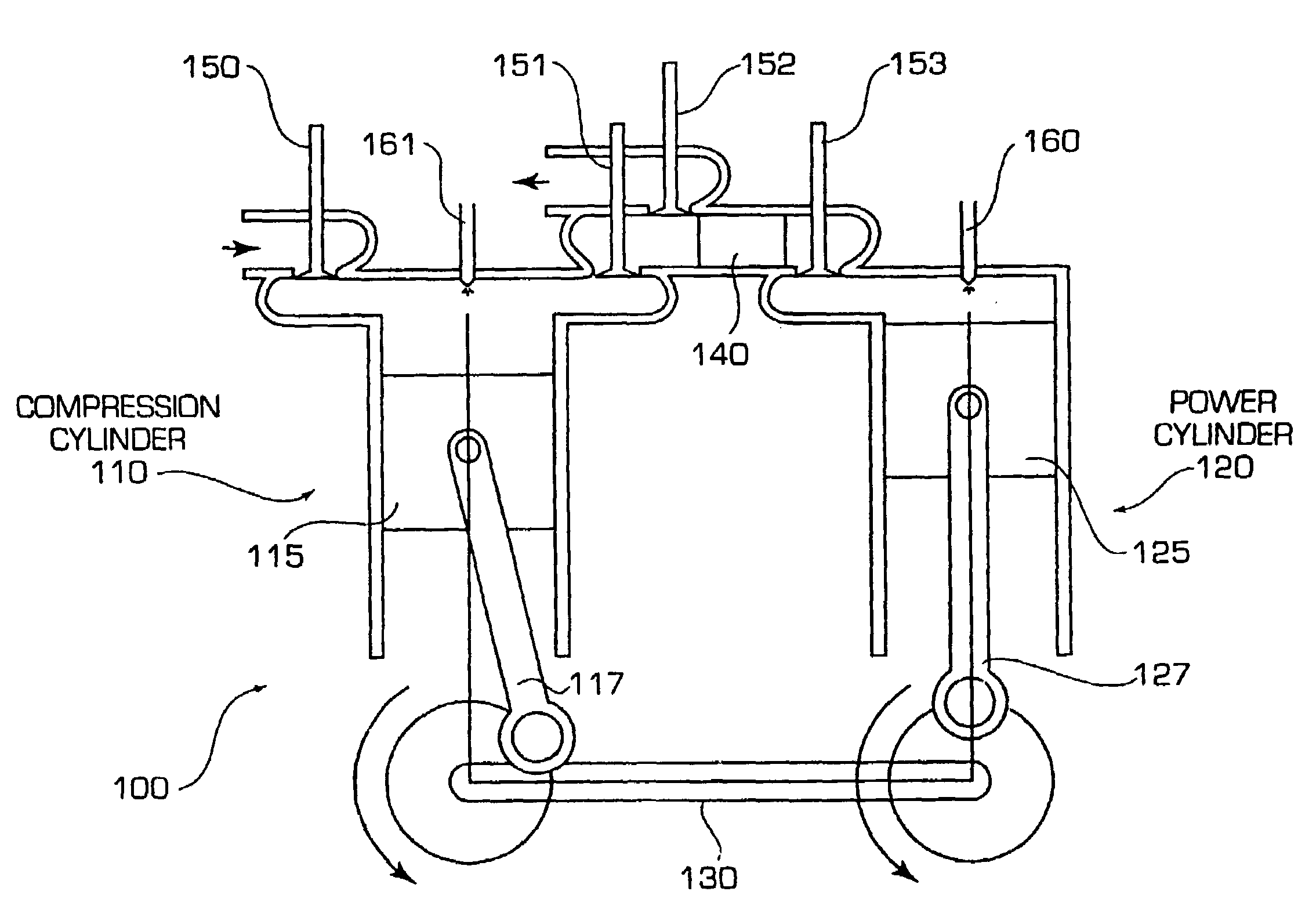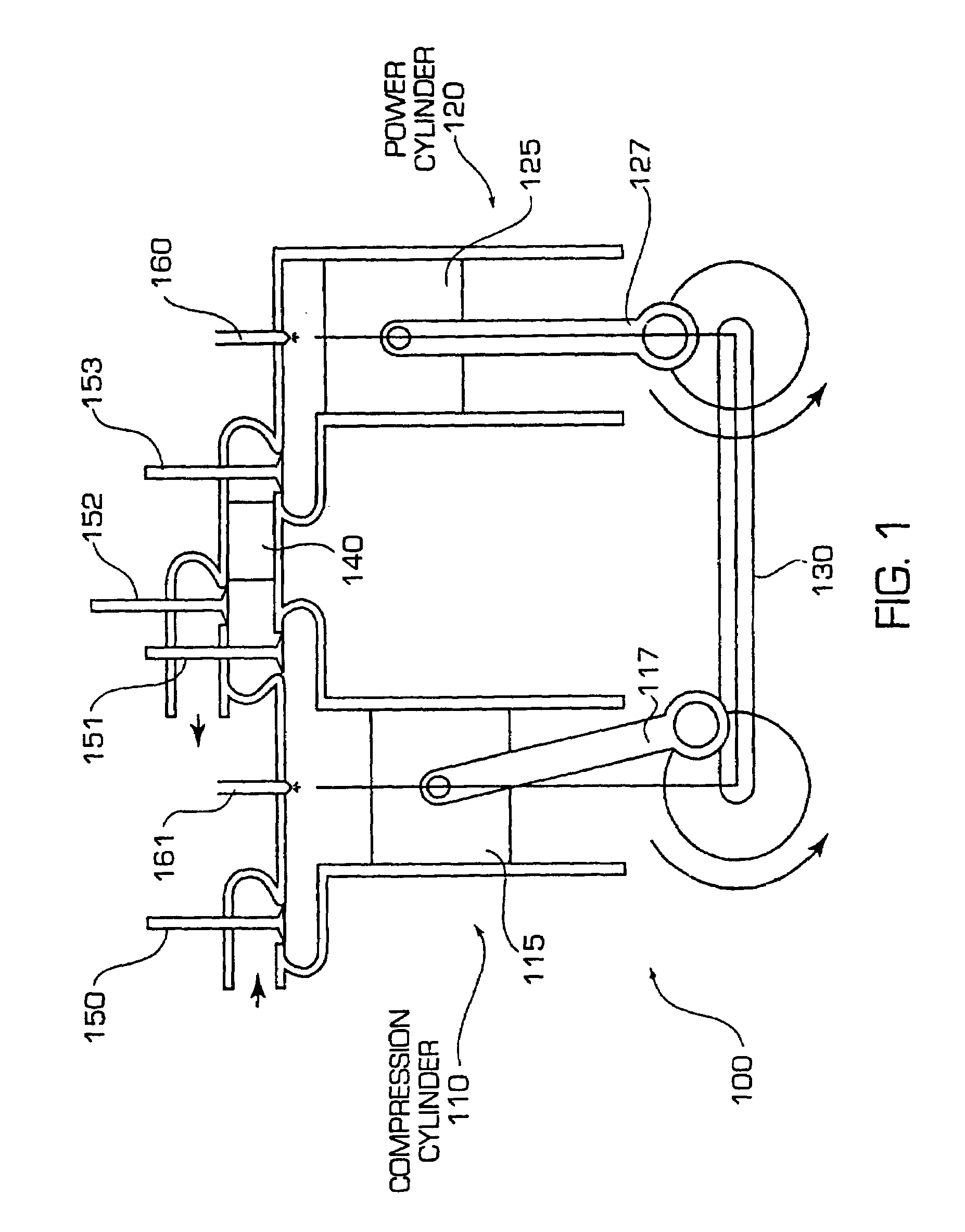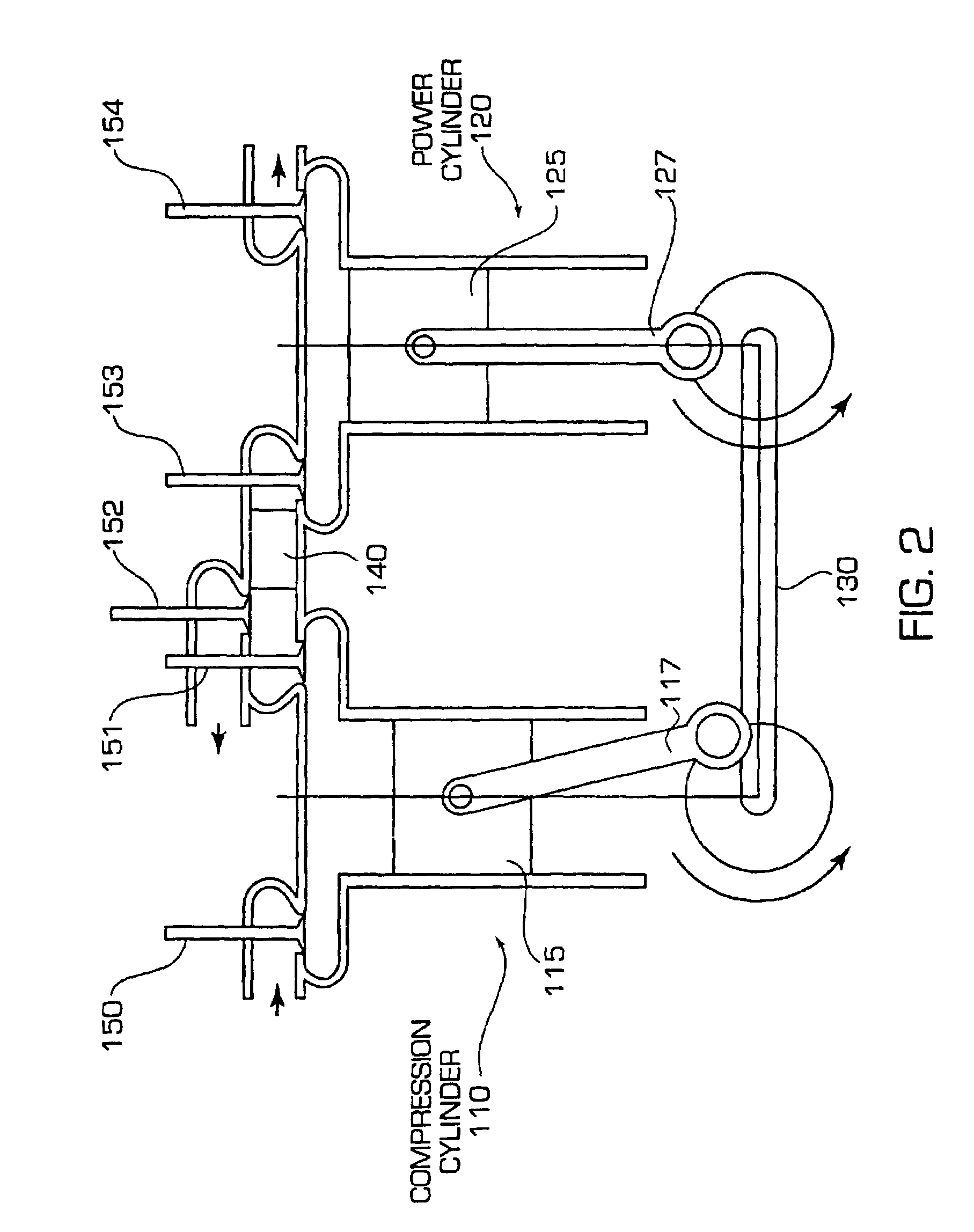Internal combustion engine with regenerator, hot air ignition, and supercharger-based engine control
a supercharger and engine technology, applied in the direction of engines, machines/engines, mechanical equipment, etc., can solve the problems of increased exhaust pollution, carnot cycle rule, and lack of efficiency of current internal combustion engine generation to compete with fuel cells and other alternative vehicle movers, etc., to achieve low heat loss, low flame temperature, and efficient fuel ratio
- Summary
- Abstract
- Description
- Claims
- Application Information
AI Technical Summary
Benefits of technology
Problems solved by technology
Method used
Image
Examples
Embodiment Construction
[0076]The engine of the present invention has separate cylinders for intake / compression (compression) and for power / exhaust (power). The compression cylinder is cool, and in fact during the intake and compression process, efforts can be made to create a nearly isothermal compression process by optionally adding water droplets to the intake air.
[0077]The power cylinder is the ‘hot’ cylinder, with typical head and piston temperatures in the range of 1000–1100 F. This necessitates the use of 18 / 8 (SAE 300 series) stainless steels for the head and piston, and superalloys for the valves. Combustion temperatures are in the neighborhood of 2000–3000 F. The high heat of the combustion chamber prior to combustion reduces the heat transfer from the working fluid to the chamber during the power stroke. It also reduces the radiant heat transfer, however the larger reduction in radiant heat transfer comes from keeping the maximum temperature below 3000 F.
[0078]The compression and power cylinders...
PUM
 Login to View More
Login to View More Abstract
Description
Claims
Application Information
 Login to View More
Login to View More - R&D
- Intellectual Property
- Life Sciences
- Materials
- Tech Scout
- Unparalleled Data Quality
- Higher Quality Content
- 60% Fewer Hallucinations
Browse by: Latest US Patents, China's latest patents, Technical Efficacy Thesaurus, Application Domain, Technology Topic, Popular Technical Reports.
© 2025 PatSnap. All rights reserved.Legal|Privacy policy|Modern Slavery Act Transparency Statement|Sitemap|About US| Contact US: help@patsnap.com



